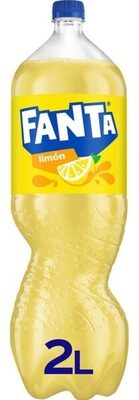Fanta Lemon 2ltr - 2 L
This product page is not complete. You can help to complete it by editing it and adding more data from the photos we have, or by taking more photos using the app for Android or iPhone/iPad. Thank you!
×
Barcode: 5449000006011 (EAN / EAN-13)
Quantity: 2 L
Brands: Fanta
Categories: Plant-based foods and beverages, Beverages, Plant-based beverages, Carbonated drinks, Fruit-based beverages, Sodas, Fruit sodas, Non-alcoholic beverages, Lemon soft drinks, Sweetened beverages
Manufacturing or processing places: Madrid, España
Stores: Ahorramás
Matching with your preferences
Environment
Packaging
Transportation
Report a problem
Data sources
Product added on by veganeamos
Last edit of product page on by redspider.
Product page also edited by alexmtk, alexrios, bertrand-amaraggi, charlesnepote, date-limite-app, foodless, inf, jog13ovd, kiliweb, off.fd06b927-6ca9-48a6-806a-352f5159ebd4, openfoodfacts-contributors, packbot, roboto-app, tacite, teolemon, thaialagata, yuka.FZ1OFdGiHcwrEsT-_7NkjD6XTcn7AtFHG1kToQ, yuka.L5tYNvWTQesRNcuK_70S4SqlK9ziCuRWFm8zog, yuka.PbsdF9SNL5AAOMb8zpsbgze_TLnAJtZXMU4Jog, yuka.VnZBR1Fhc0dtS0l2cGRzOTIwcmYySTlsLzhDMVVWS3dMczROSVE9PQ, yuka.YTY4ZkxhczRqZVFCcGYwVitpTGZvb2gyd29UeWVseTFKK2dPSVE9PQ, yuka.ZDVndEFiUmF0dlVRc3ZNbTh4RDV3UEJUMzVTNGNEMmxNckk5SVE9PQ, yuka.sY2b0xO6T85zoF3NwEKvlk5XVNT_pwL8ESP6oEe54o-HdsXGcO9Jw4zVCKs, yuka.sY2b0xO6T85zoF3NwEKvllNKC8PXvBPNahHjoGmu5NSsA7vQeOAj4YnzM6s, yukafix.








